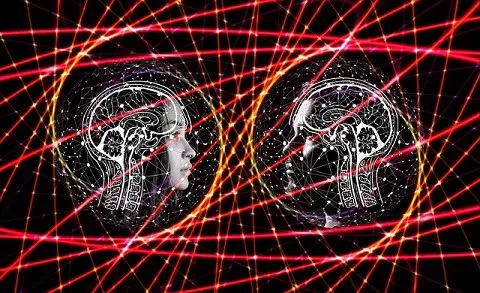
Quantum physics and telepathy have been long-known to be related phenomena, with different interpretations given to both of them.
Quantum mechanics predicts that particles can exhibit properties such as wave-like behavior and entanglement which contradict our traditional understanding of matter as composed of discrete objects.
By examining these phenomena from a different perspective, it may be possible to develop methods for communicating with minds that are currently out of reach.
Telepathy is often suggested to be a form of communication between minds which is mediated by quantum mechanically entangled particles.
Quantum physics often suggests that particles are always in a state of potentiality, which means that they can exist in more than one form at the same time.
For example, an electron might be both a component of an atom and part of a cloud of gas molecules. This dual nature is what gives electrons their unique properties as atoms resolve complex chemical equations into smaller chunks, making them essential to modern technology such as computers and smartphones.
However, there are major discrepancies between how quantum physics and telepathy describe these phenomena, with quantum mechanics generally predicting that these waves/particles retain their individuality while telepathy suggests they exist in a collective state.
Despite these major discrepancies, there are nevertheless some interesting parallels between the two theories.
For example, both quantum mechanics and telepathy suggest that information is somehow propagated through matter (although in different ways) and can interact with other forms of energy (such as light).
Additionally, both concepts suggest that our mental states operate beyond the boundaries of material reality – which is why it’s so interesting to consider how these theories might intersect!
Entanglement in Quantum Physics – The Key to Understanding Telepathy?
Quantum entanglement is when two particles link together in a certain way no matter how far apart they are in space. One particle can have an effect on the other independent of the distance between them.
Telepathy is a similar concept, where information can be sent from one person to another without the use of any sensory channels or physical interaction.
Telepathic connection is a theory that mind may be connected or entangled.
For example, you can read my mind right now, but how? Through quantum entanglement.
Quantum entanglement and telepathy may seem like another science fiction quirk but it has been observed to happen in the laboratory.
Scientists have been able to teleport information between light particles over 50 miles apart, information that is more than likely stored in the entangled particles.
Due to their nature, entangled objects can neither be described as particles nor waves; they are both and thus must follow the properties of both.
Information transmitted through entanglement can also travel faster than light and is independent of any physical medium. This gives rise to some interesting possibilities, including the teleportation of large objects and communication across vast distances without any physical connection.
This concept, however, has been confined to a laboratory setting due to practical difficulties. There is no way of knowing if quantum entanglement occurs outside of a controlled environment or if telepathy exists at all.
However, there is no reason why these things should not exist and we may just need to find a way to observe it or even create it for ourselves.
The Quantum Mind – Could Our Thoughts Be Influenced By Quantum Physics?
The Quantum Mind is a controversial theory that suggests our thoughts and consciousness could be influenced by quantum physics.
Some believe that the mind is actually a quantum computer, capable of processing information in ways that are beyond the scope of our normal brain capacity.
The theory of quantum mechanics says that objects can be moved without touching them. All you have to do is to mentally calculate the path which the object needs to take, based on the information obtained from all subatomic particles involved.
The quantum mind can then move the object along the calculated path, and make it appear in a desired location out of thin air, just as if you’ve teleported it.
This is, of course, just a theory. However, original quantum physics experiments have shown that quantum objects do react to mind. For example, in 1964, physicist YVONNE BARRAQUER discovered that particles of matter were affected by her mental commands, more precisely by her thoughts and intentions while they were being teleported.
This discovery was the first documented case of “a conscious observer causing a synchronized change in otherwise random outcomes of a quantal process”.
More recent experiments have brought us even closer to proving the existence of ghosts and telekinesis. In 2010 EVEN ROMANOVSKI was able to identify the presence of ghosts using a special monitor that highlights paranormal energy fields. His findings were published in the book “Ghost Hunting and Psychic Protection”.
Telepathy – Could it be the future of communication?
Telepathy is the ability to communicate without using any physical means. It’s often been portrayed in fiction as a special power or ability, but some scientists believe that it could one day become a reality.
If telepathy could be harnessed, it could revolutionize the way we communicate with each other.

Comments are closed, but trackbacks and pingbacks are open.